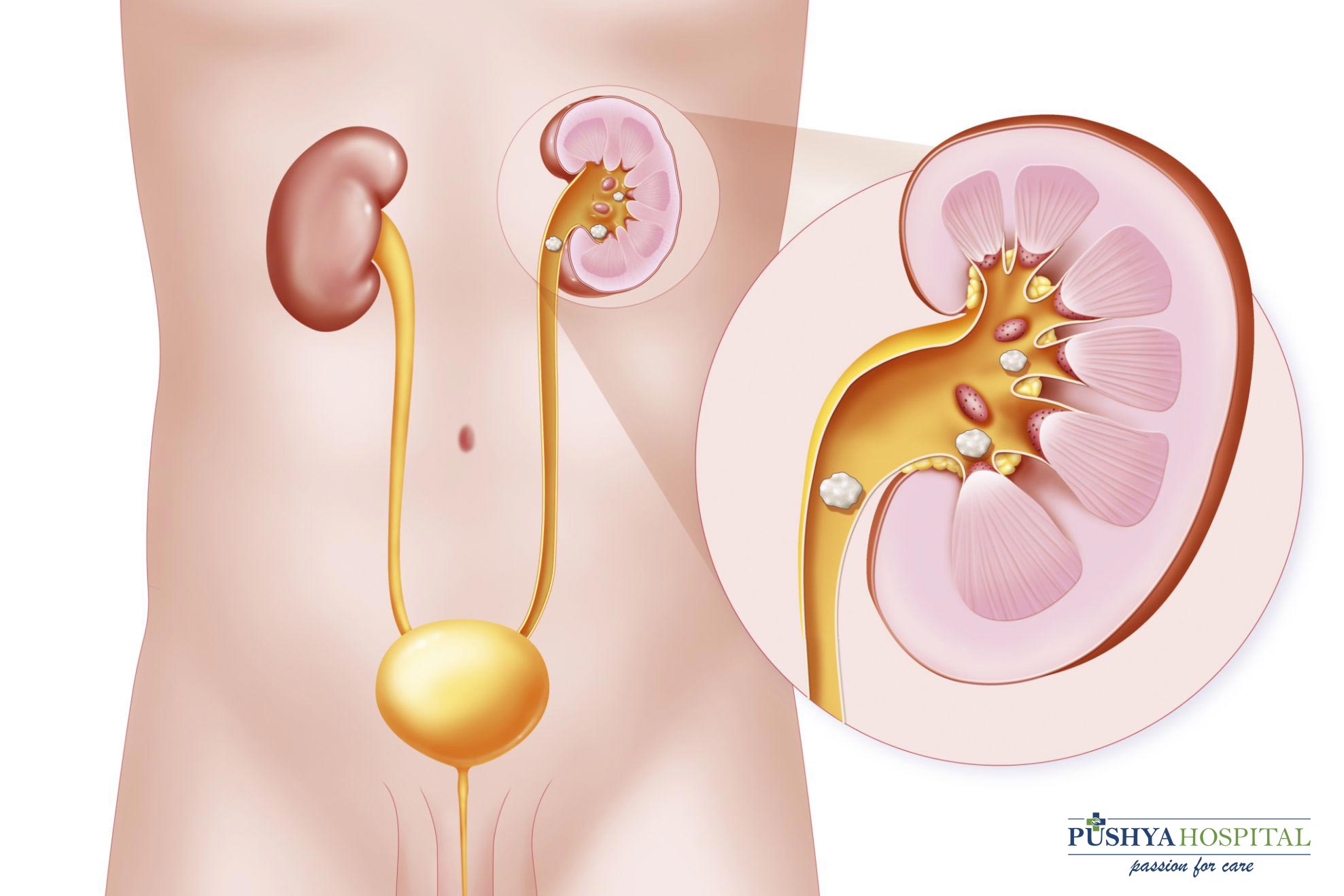Introduction to Kidney Stones
Kidney stones often have no definite single cause but the combination of many factors may increase the kidney stone risk. Kidney stones occur because of dissolved minerals on the inner line of kidneys and this fluid does not dilute in urine. These stones usually made of calcium oxalate and uric acid but could emerge because of other several compounds also. Kidney stones can grow till the size of a golf ball with sharp crystalline structure. These stones could be small and pass unnoticed by the urinary tract, but it may become a reason for much pain as it exits the body.

Causes and reasons
Leading cause of kidney stone is lack of water in the body, stones emerge commonly in those who drink less than eight to ten glasses of water per day, as the body does not have enough water to dilute uric acid, a component of urine, urine becomes more acidic. Excessive acidic urine can lead to kidney stone origination.
Medical conditions as Crohn`s disease, urinary tract infections, renal tubular acidosis, hyperparathyroidism, medullary sponge kidney and Dent’s disease increase the risk of kidney stone.
Symptoms
- Pain in the back, belly or side
- Burning sensations or pain during urination
- Urgent need to urinate
- Blood in the urine
- Smell in urine
- Small amount of urine because of blockage in urinary tract
- Nausea, vomit and fever

How we can evaluate (Investigation)
There are following examination ways to confirm kidney stone:-
- Serum Creatinine:- This procedure tells about kidney Function, that how well kidney is doing its work.
- Urine routine microscopy:- With the help of this microscopy doctor could evaluate the presence of infection and blood in urine.
- Ultrasound:- Ultrasound is efficient to give an idea of size and location of stone into kidney along with swelling into the kidney.
- X-Ray Kub with IVP:- Provides information of stones to an internal structure of the kidney. This investigation procedure also helps a surgeon that how to approach a kidney for stone removal.
- PT INR, APTT test along with CBC and random blood sugar test, confirms about bleeding with urine.
Treatment options
- Removal of Kidney stones take place through PCNL (percutaneous nephrolithotomy), it is an endoscopic, minimally invasive surgical procedure. PCNL is considered safer and less complicated than earlier big incision surgeries. Doctors instruct patient to not take blood thinning agents as aspirin, clopidogrel 5-7 days before the surgical procedure.
- PCNL is done in general anesthesia and also can be done with spinal anesthesia. The patient is not allowed to have any food or fluid for 6 hours before surgery.
- Surgery is performed with the help of fluoroscopy (x-ray machine). A surgeon punctures the kidney at flank region and PCNL is performed with small incision 1-1.5 cm. Stone is broken by small size lithotripter and removed by converting them in pieces. Fluoroscopy ensures the clearance. Better drainage is confirmed with DJ. A drain tube is placed into the kidney.
- After surgical procedure painkiller injection is given to cover up the pain, the patient may complain about blood with urine, which settles down thoroughly.
- The drain tube is removed after 48 hours, on next day patient could be discharged.
PCNL is a safe and suitable surgical procedure for Kidney stones, hundreds of successful PCNL take place in Pushya Hospital every month, we understand that kidney stone pain is quite intolerable to anyone, our qualified and experienced Urologists take care to minimize your pain efficiently and schedule post surgery checkups on time.



